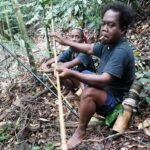Worldwide, the dormouse family consists of three sub-families and 29 species and in Slovenia the ‘European edible dormouse’ (Glis glis) is native. There live three other dormouse species: garden dormouse (Eliomys quercinus), forest dormouse (Dryomys nitedula), and hazel dormouse (Muscardinus avellanarius). While the European edible dormouse is very abundant (and the largest), the other three species are rare and protected. Dormouse trapping is a very old tradition in Slovenia.
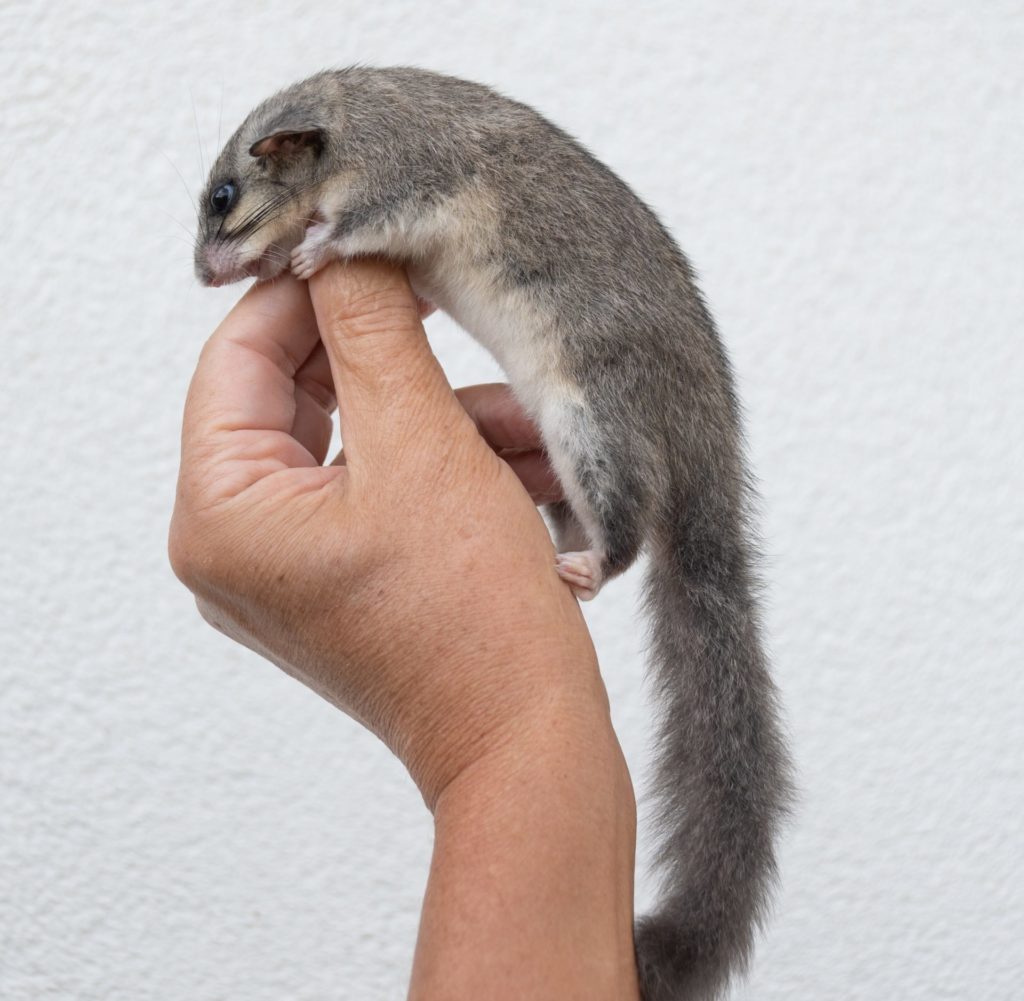
Dormouse trapping was first mentioned in Slovenia already in 1240 and it was better described by Valvasor in the 17th century. The European edible dormouse distribution ranges from the whole of Continental Europe up to Western Asia. It is not a threatened species and lives in suitable habitats in sufficient numbers all over its distribution ranges. Its name ‘… Edible Dormouse’ originates from Romans, which considered them as delicacies. They bred them and fattened them up in clay pots filled with hazelnuts for human consumption.
Dormice are rodents, which live nocturnally and hibernate for six months or longer, which gave them their name based on ‘dormant mice’. The Slovenian name for dormouse is ‘Polh’ and dormouse trapping and eating them is part of the national identity, called ‘Polharija’. In past centuries, dormouse trapping was a necessity for the local rural population, as the larger game was only allowed to be hunted by noblemen. In autumn, when also young dormice grew up, hunting them was important. It provided people with meat, fat, and skin for further usage. Dormice in the Balkans took on a similar role to rabbits in the UK for feeding the local population.
What are dormice feeding on?

Beechnuts are the most important dormouse diet at least in Slovenia and Croatia. There is beech (Fagus sylvatica) is the most abundant tree species. They can feed on their nuts already during summer, although they are not ripe. In fall, when beechnuts get a lot of fats, dormice feed almost only on this type of food. However, in spring and early summer as well as in the years when beech trees are not in mast they have to rely on other types of food. The term ‘must’ means, that beech trees produce an abundance of nuts that season. The additional diet is very broad: from tree buds, young leaves, seeds, fruits, mushrooms, insects, and sometimes bird eggs and offspring.
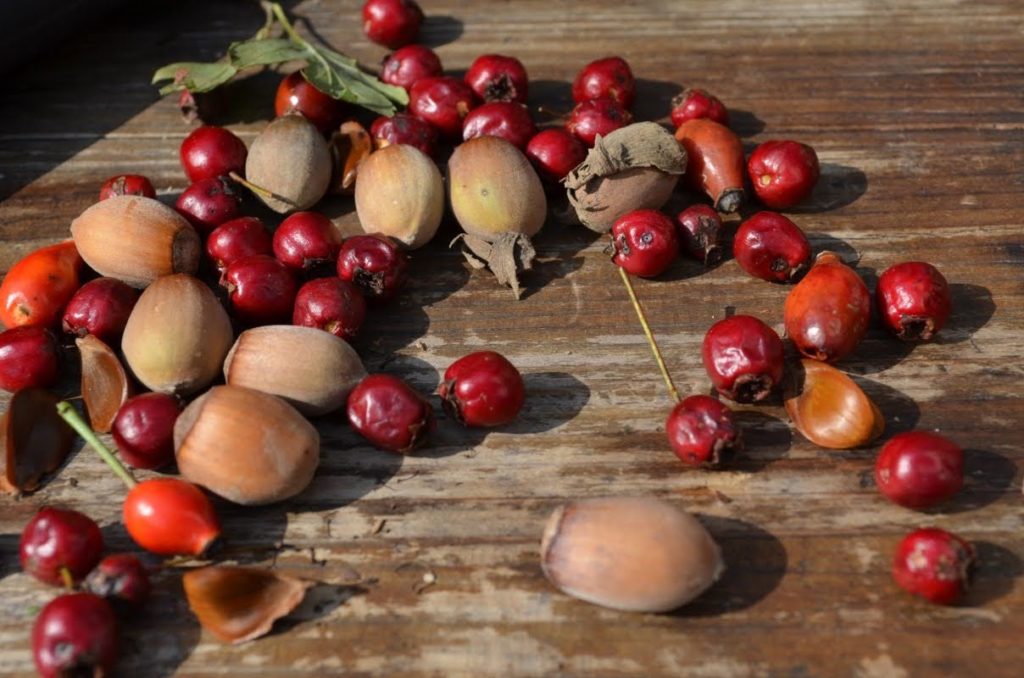

Other important nuts are also acorns, hornbeam nuts, hazelnuts, and chestnuts. Fruits can also have an important contribution to their diet, especially hawthorn, whitebeam, European wild pear, etc.
When are dormice hunted?
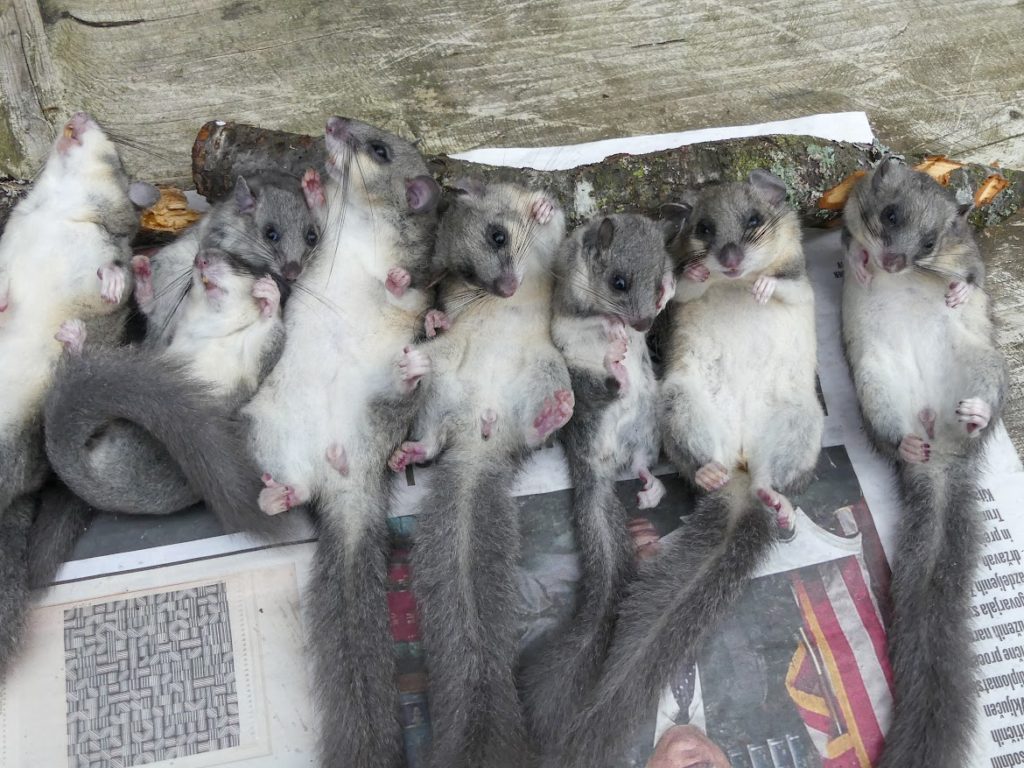
Nowadays, dormouse trapping is legally allowed in Slovenia and Croatia, but it is only actively pursued in the southern parts of Slovenia and northern parts of Croatia. And is also pursued in some Croatian islands. In Slovenia, open season is for two months a year (October and November). Dormice however can be mostly caught in the beginning of October, as later they start with hibernation. In years with low amounts of food, dormice don’t reproduce, and they go into hibernation sooner.
Therefore, the hunting success can vary extremely between the years. It ranges from catching up to 100 dormice a night in a good year to catching none in the next year. A hunting license is required, but it is relatively easy to obtain. Hunting is not done for subsidence anymore but is mostly a social event celebrating an old tradition. But the skill of dormice hunting should be collected, preserved, and distributed in case times are getting tougher again.
Traps used for dormice hunting
Hunting dormice is only done by trapping. All other methods – due to their nocturnal activity high up the trees – will likely fail or are not efficient. Types of traps used are wooden box traps of various designs, crossbow-style traps, and spring pole traps.
Box traps

Wooden box traps with a metal striking bar work similar to mousetraps by releasing a metal bar striker onto the dormouse neck. This breaks their neck immediately and living dormice in a trap is seldom seen. Older designs use either a wooden shutter door or lift a metal bar to the dormouse’s throat, suffocating it within a very short time.
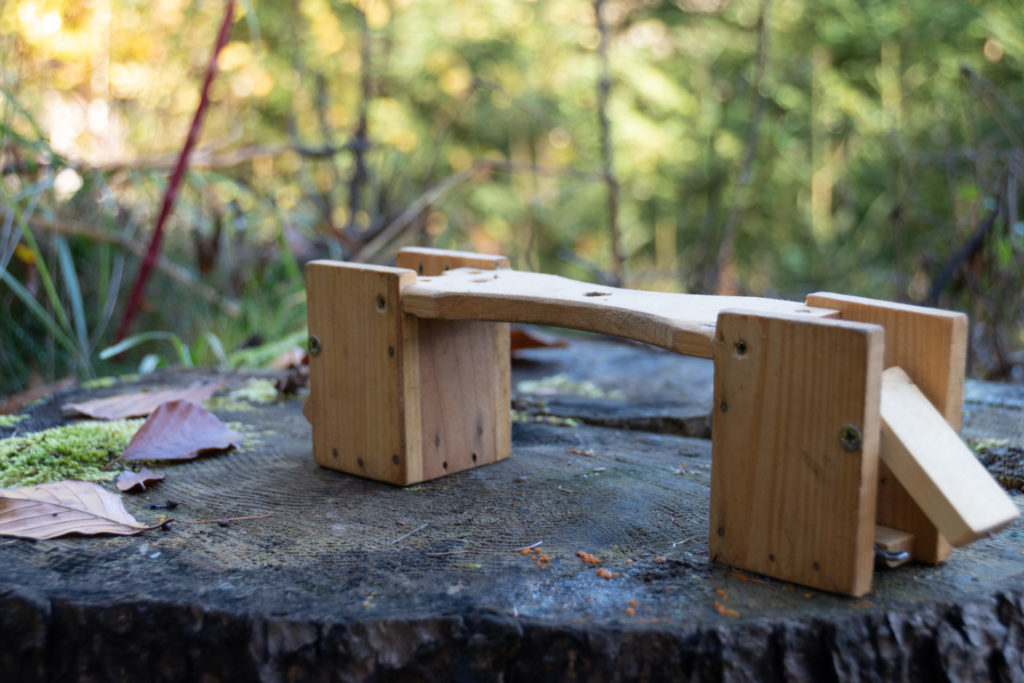

Such wooden box traps come either with one or two catching cavities and always have a wooden extension with a hole. Into this hole, a stick gets inserted, which is used for maneuvering the trap into the trees and removing them again. These are the standard traps nowadays, made by local artisans in rural villages, which therefore always vary in size and design. There is currently no industrial production of such traps.
Crossbow traps

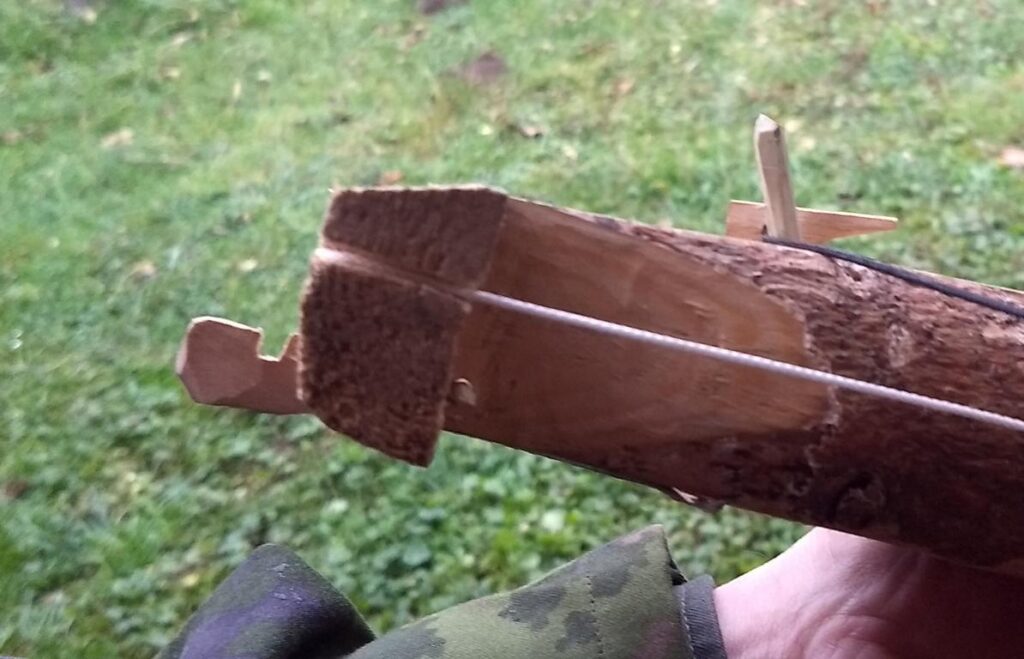
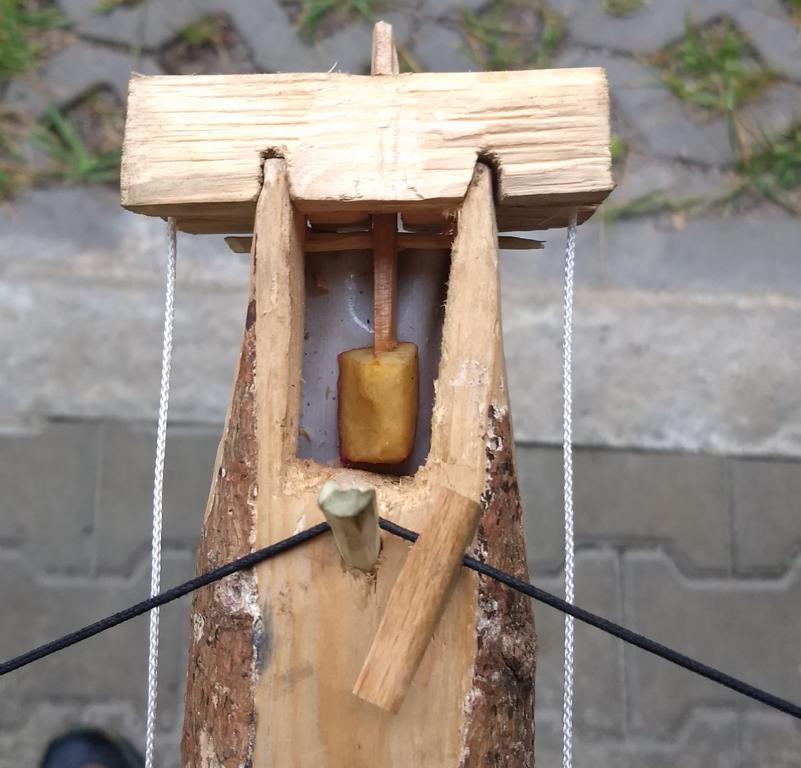
Crossbow-style traps either operate a wooden shutter bar for breaking the dormouse neck or use a bowstring for snapping the neck, as shown above.
Springpole traps
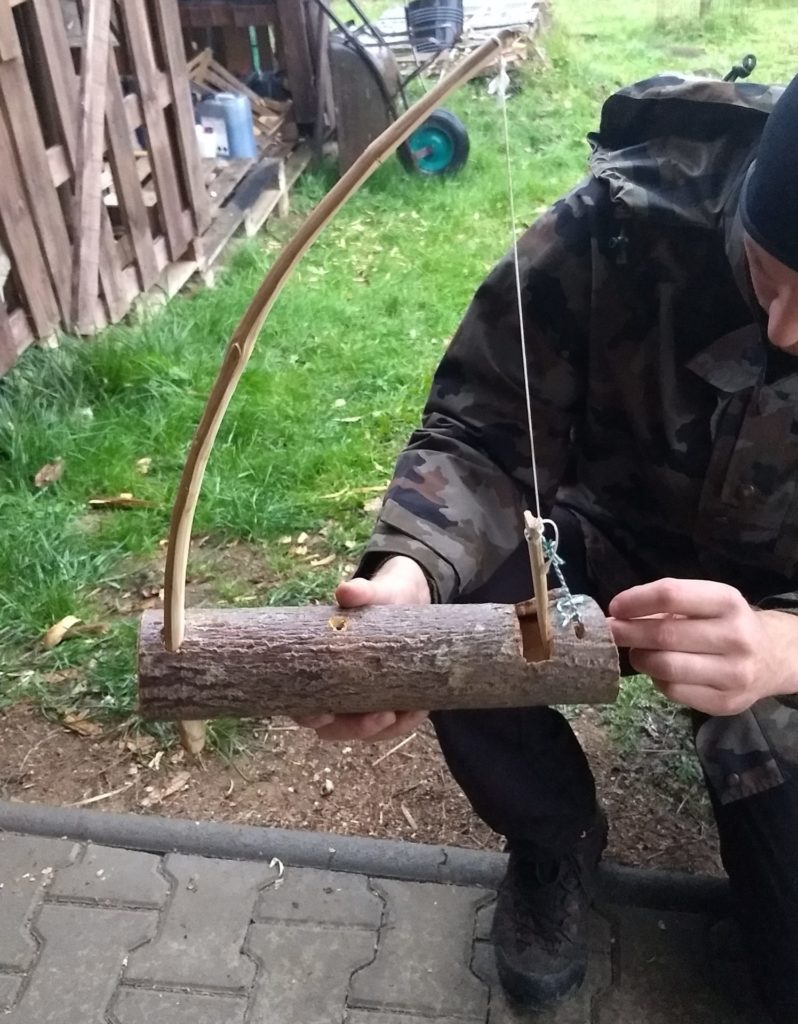
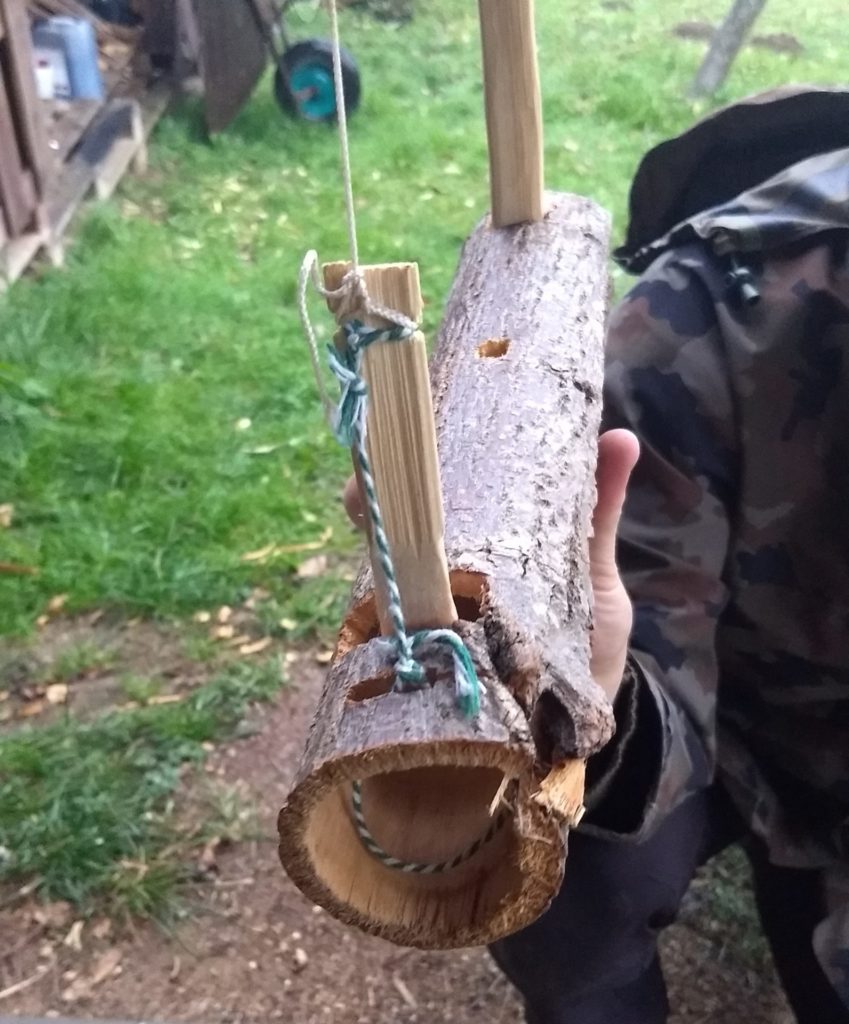
Spring pole-style traps are very similar to various Southeast Asian- and African designs. They use a spring pole fitted onto a wooden cylinder and direct a noose over the dormouse’s neck, suffocating them. In Slovenia, a linden bark cylinder is used.
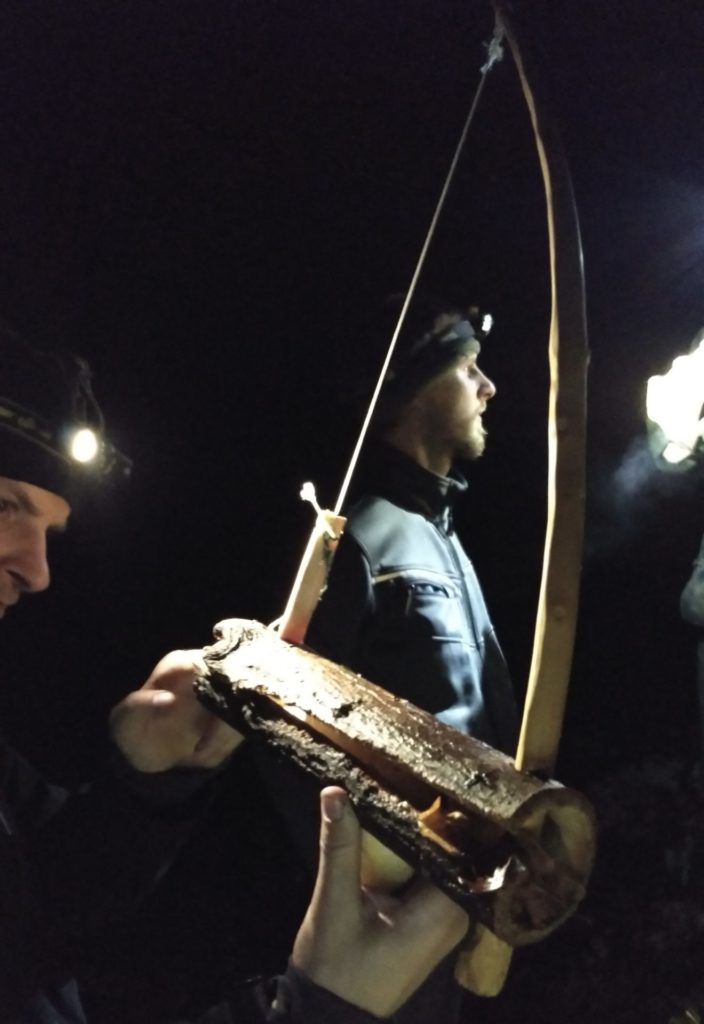
Baiting of dormice traps
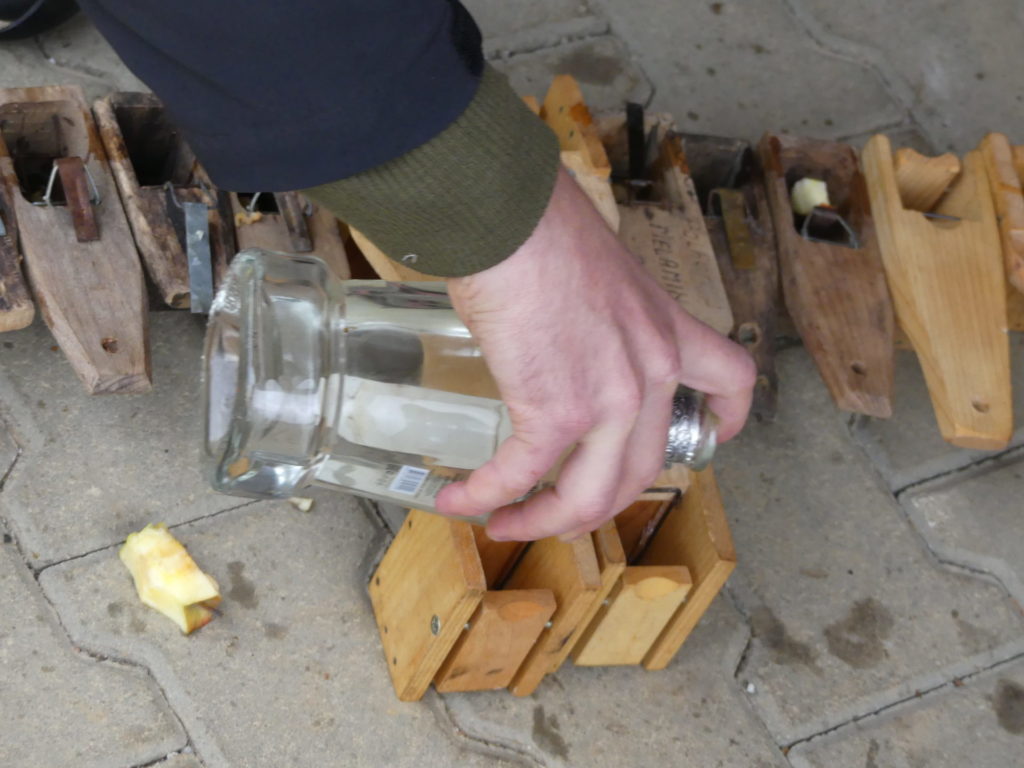
As bait – in all types of traps – either cubic-shaped pieces of apples or whole raw sweet chestnuts are used. We made tests with both baits on the same double-box trap. This showed that smell is maybe not as important as previously thought. Because the apple bait will smell, but we are not sure if there is much smell of the chestnut through its hard shell.
This test was done during a night with very hard rain, which should have washed away most of the smell. But – the rural population is convinced that smell is the all-important factor – and therefore a good shot of Slivovitz or other fruit spirit is poured over the bait before heading to the woods. Thereafter, for every trap, a long hazel stick is prepared, which will hoist the trap up to a high-laying branch of a tree suitable for dormouse trapping.
Best locations for dormouse trapping
Southern Slovenia belongs to the temperate broadleaf- and mixed forests biome and is dominated by beeches and hornbeam trees. In secondary forests, a variety of other broad-leafed trees, like hazel, linden, birches, and others, are intermingled. The main food for dormice however is beechnuts. The more and older the beech trees in a forest, the higher the likelihood of catching dormice.
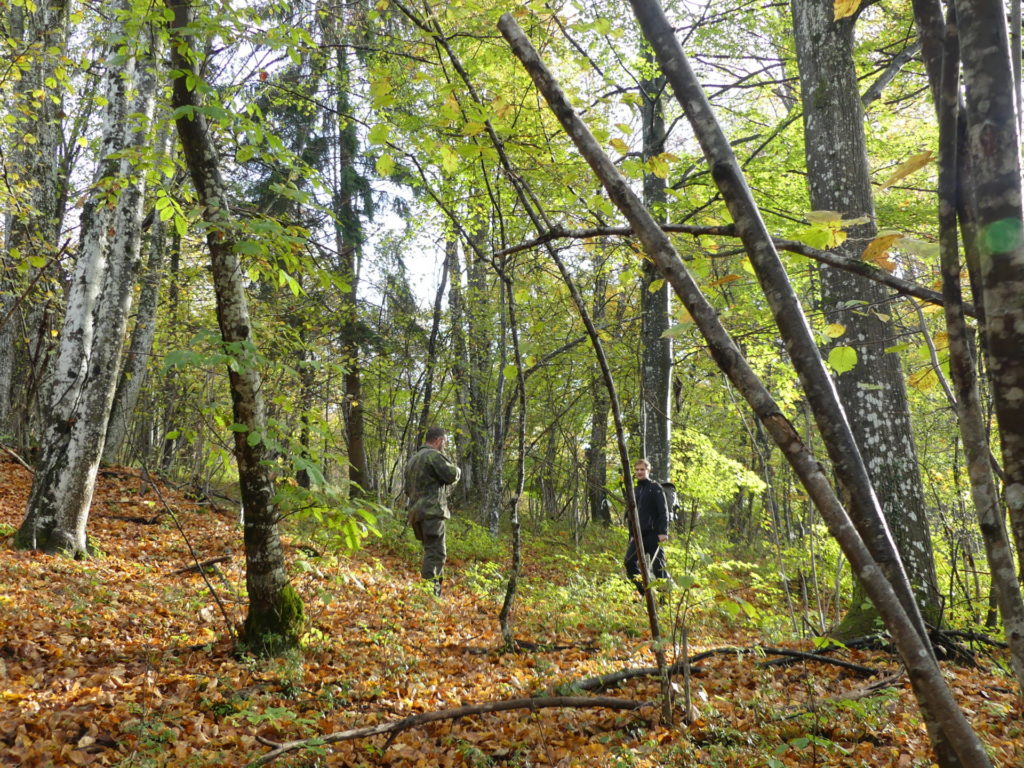

Young beech trees will not bear fruits. And – from loggers’ perspective ‘well maintained’ – beech tree forests offer too few hiding places and camouflage for dormice against predators. They are therefore not ideal for dormouse trapping. Dormice prefer well-leaved, gnarled old beech trees for roosting and searching for food.
But also, secondary trees connected via branches to such old beech trees will offer good trapping opportunities. These secondary trees, acting as passageways for dormice can even be conifers, like spruces, and will still be productive. Dormice are also using rock crevices and holes in the ground for roosting and hibernation. But catching them on the ground is considerably more difficult compared to catching them in trees. Setting up traps at the entrance of a dormouse hibernating place is in Slovenia ethically not acceptable due to the ease of catching at such a place.
Positioning and checking of dormouse traps

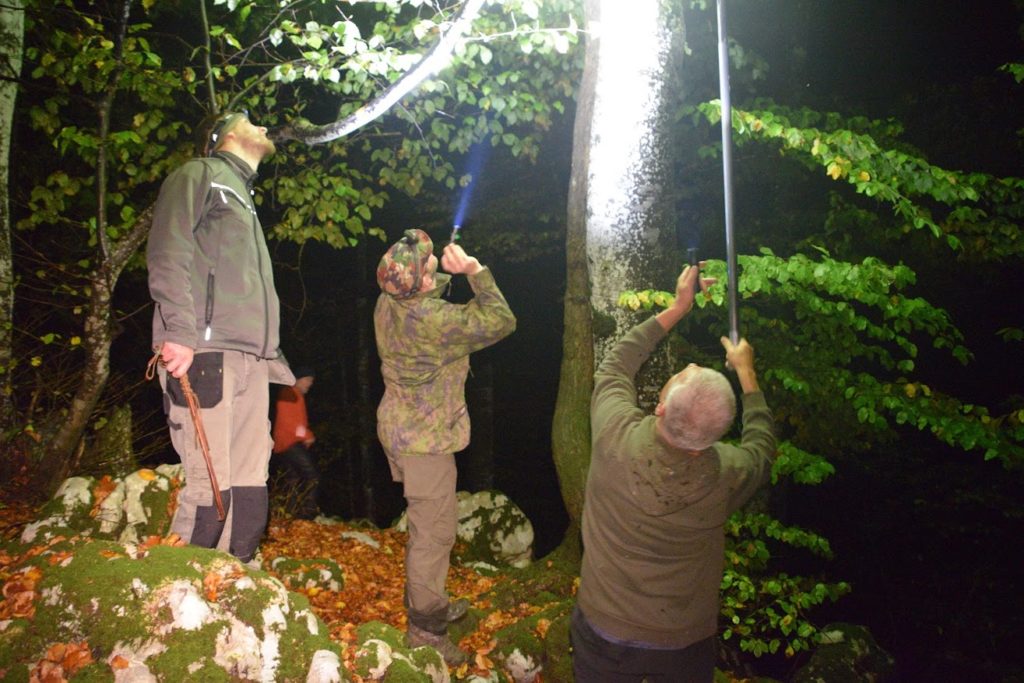
The loaded and fired-up traps will be lifted by hazel sticks as high up the tree s possible. These hazel sticks will act as a counterweight to the traps for not fall off the tree. As a modern invention and the possibility to lift the traps high up in suitable trees, an extensible fishing rod was tested. This rod had changeable baskets at its end. A about 2-inch diameter pipe of 20 inches length for setting the short (about 1 m / 3 ft long) hazel stick with the trap into the trees and a double as big diameter pipe for retrieving these sticks.
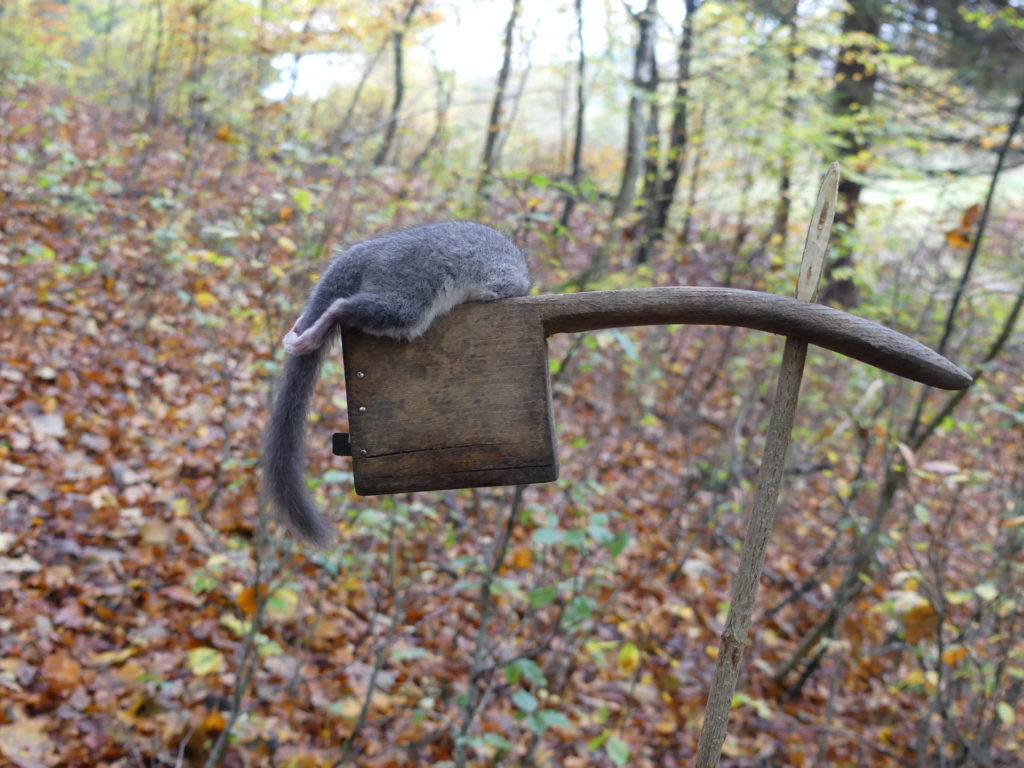
Passing dormice will put their head down the trap box and try to pull out the bait for consumption outside the trap. This action will trigger and fire the trap.


When setting up the trap line before sunset, the first inspection will be around 2 – 3 hours later. Caught dormice being retrieved, trap newly baited and set up in the tree again. If possible, another round of checks is advisable again after such time and the final inspection will be after breakfast in the morning.
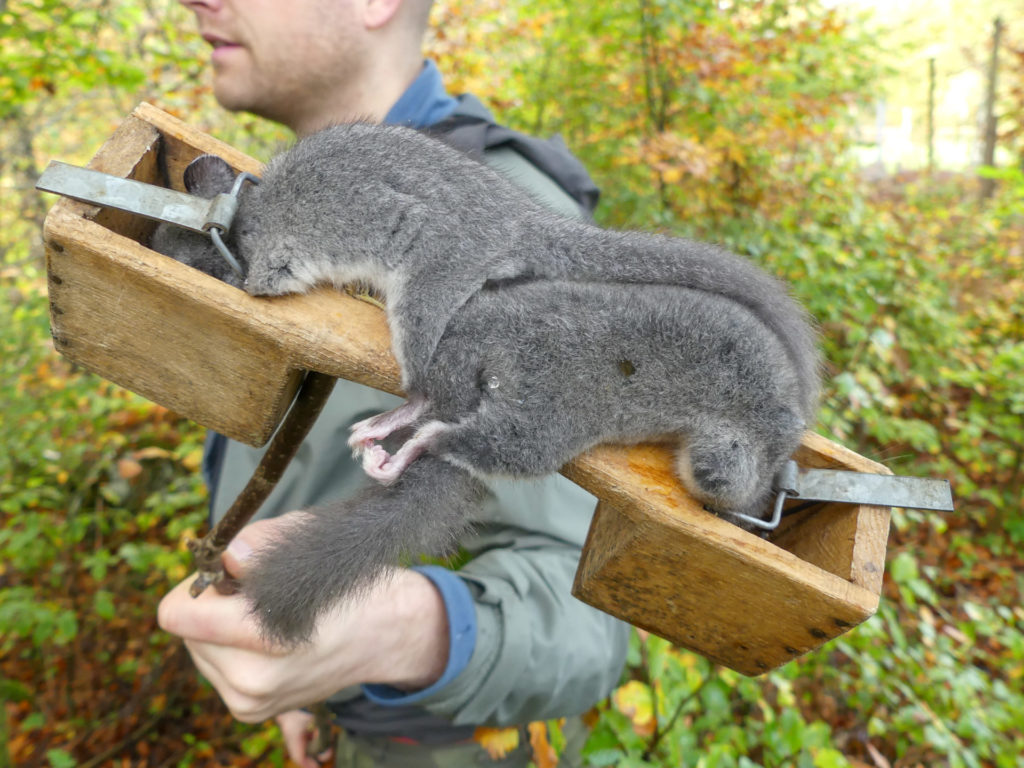
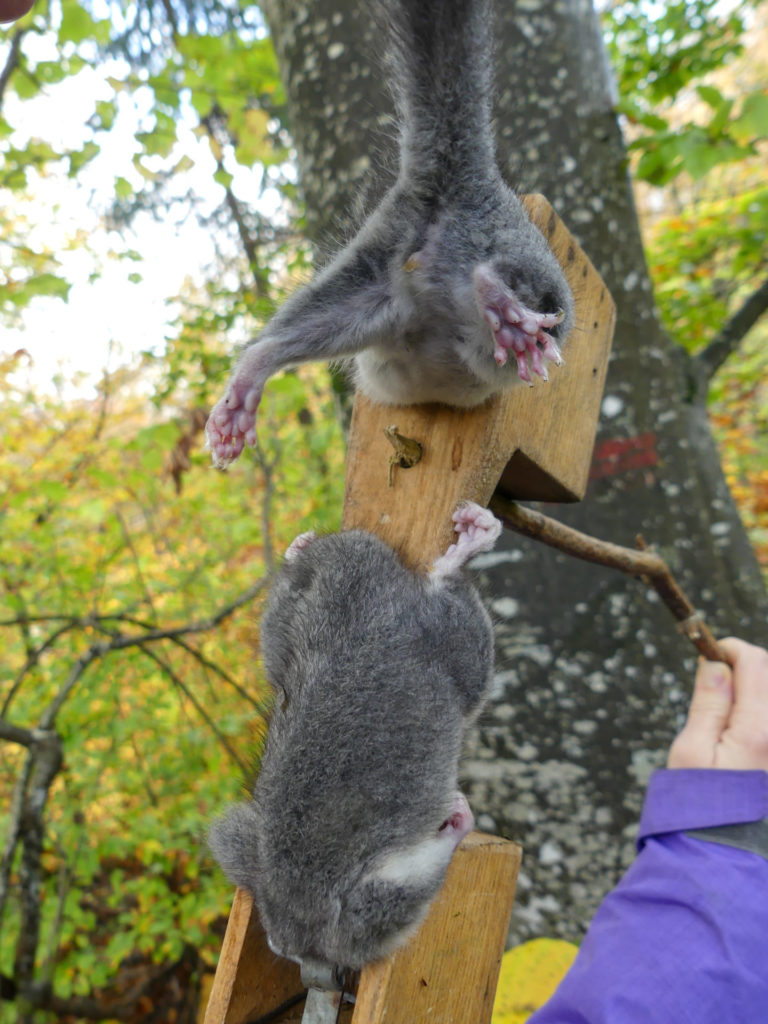
Catching two or three dormice in one trap at one location is not uncommon. There is no noticeable preferential catch of either sex of adults vs juveniles, but all of them are caught in roughly even numbers.
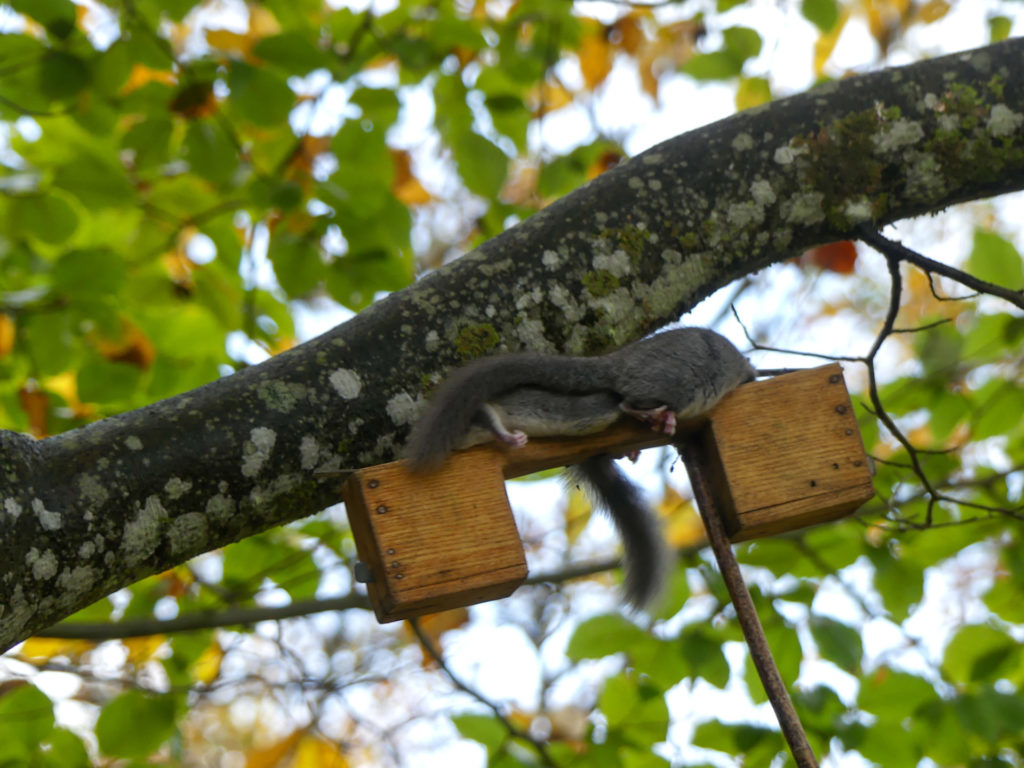
Caught dormice are collected in a bag and kept as cool as possible for further skinning and processing. This process and also cooking will be described in a separate article, which you can find at this Link here.
Lessons learned from dormouse trapping in Slovenia:
- There is a high density of European edible dormice in Southern Slovenia’s beechwood forests during mast years.
- For catching them, a specific type of box trap is necessary.
- Traps have to be checked twice during nighttime.
- Polharija is nowadays a social event creating a national identity.
Further readings about Hunting of Rodents on this website:
Skinning and processing of the dormice in southern Slovenia can be accessed here.
Scissor Traps of Thái Đen tribals in Vietnam
Bow Traps of Thái Đen tribals in Vietnam
Deadfall Traps of Thái Đen tribals in Vietnam
.




